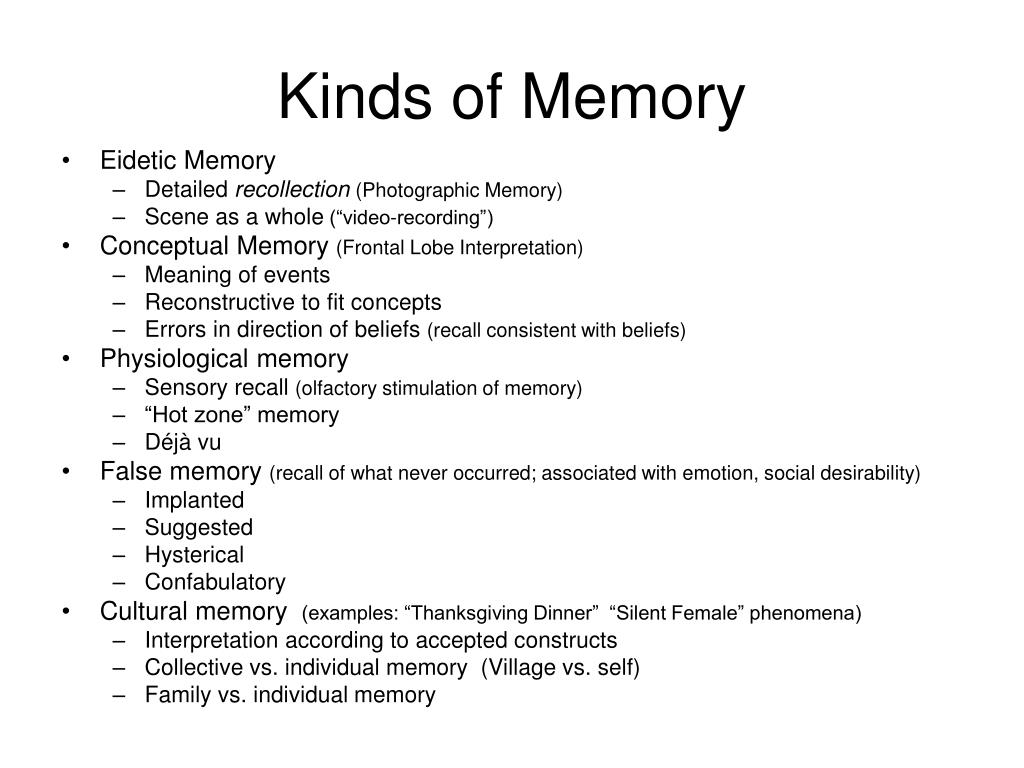

He references a child's closing his or her eyes and moving them around when asked to recall an image as evidence that children retain a mental picture of objects they have seen.

According to Lev Vygotsky, one of the most influential theorists in the field of developmental psychology, young children do indeed rely on eidetic imagery to help them remember things. If not in experts, then perhaps eidetic memory can be found in children, who have little experience with the world, and thus may have no knowledge base to help them memorize things. They are instead relying on having seen many different board configurations in the past and using this experience to recreate the situation they were shown. (5) This evidence seems to indicate that expert chess players are not actually using any sort of photographic imagery to recall the location of the pieces on the board. The advantage in memory, however, is completely neutralized when the pieces are arranged in a way that could never occur in the course of an actual chess game. It has been found that chess experts have much better recall for the location of pieces on a chess board than novices. If eidetic memory, which is so often referenced with respect to unemotional images or events, cannot be tied to the emotionally-linked phenomenon of flashbulb memory, then in what situations could it be observed? One frequently researched area is that of chess board configurations. (4) Photographic memory, which looks on the surface to be the same phenomenon, should not be long-lasting, since it does not generally have any emotional content. How accurately people remember such events appears to be directly proportional to how strong the emotional ties to the event were. Recent studies, however, indicate that over time, people's memories of such events actually do fade. (3) Such memories were, until recently, believed to be permanent, never fading in quality. In highly emotional situations, people tend to remember events so vividly that the memories take on a photographic quality. (1) (2) Such recall seems as though it might be correlated to the phenomenon of flashbulb memory. (2) Both could also reproduce poetry in languages they could not understand years after seeing it written. There have been a few well-documented cases of such remarkable recall, such as "S", the subject of Luria's The Mind of a Mnemonist, who could memorize anything from the books on Luria's office shelves to complex math formulas, and "Elizabeth", a woman who could mentally project images composed of thousands of tiny dots onto a blank canvas. (1) People with photographic memory can supposedly remember an unlimited amount of information with accuracy far superior to the average person. In theory, photographic memory involves the ability to remember things so vividly that an actual image is retained in the mind. The question, then, is not only whether photographic memory exists, but also whether it is neurologically feasible. Much evidence points towards the concept being entirely fictional, as research has not been able to consistently verify the presence of such memory.

Photographic memory, or as it is technically called, eidetic memory, is not a well understood phenomenon in the world of neuroscience either. Like much of the often talked about subjects in pop culture, however, the actual phenomenon is not very well understood by the general public. Some don't have film." As evidenced by this humorous quotation, the topic of photographic memory is quite prevalent in pop culture. Photographic Memory: A Look at Eidetic Imagery in the Brain Andrea Goldstein Search Serendip for Other Papers | Serendip Home Page Web links wereĪctive as of the time the paper was posted but are not updated. Like other materials on Serendip, it is not intended to be "authoritative" but rather to help others further develop their own explorations. This paper reflects the research and thoughts of a student at the time the paper was written for a course at Bryn Mawr College. Photographic Memory: A Look at Eidetic Imagery in the Brain


 0 kommentar(er)
0 kommentar(er)
